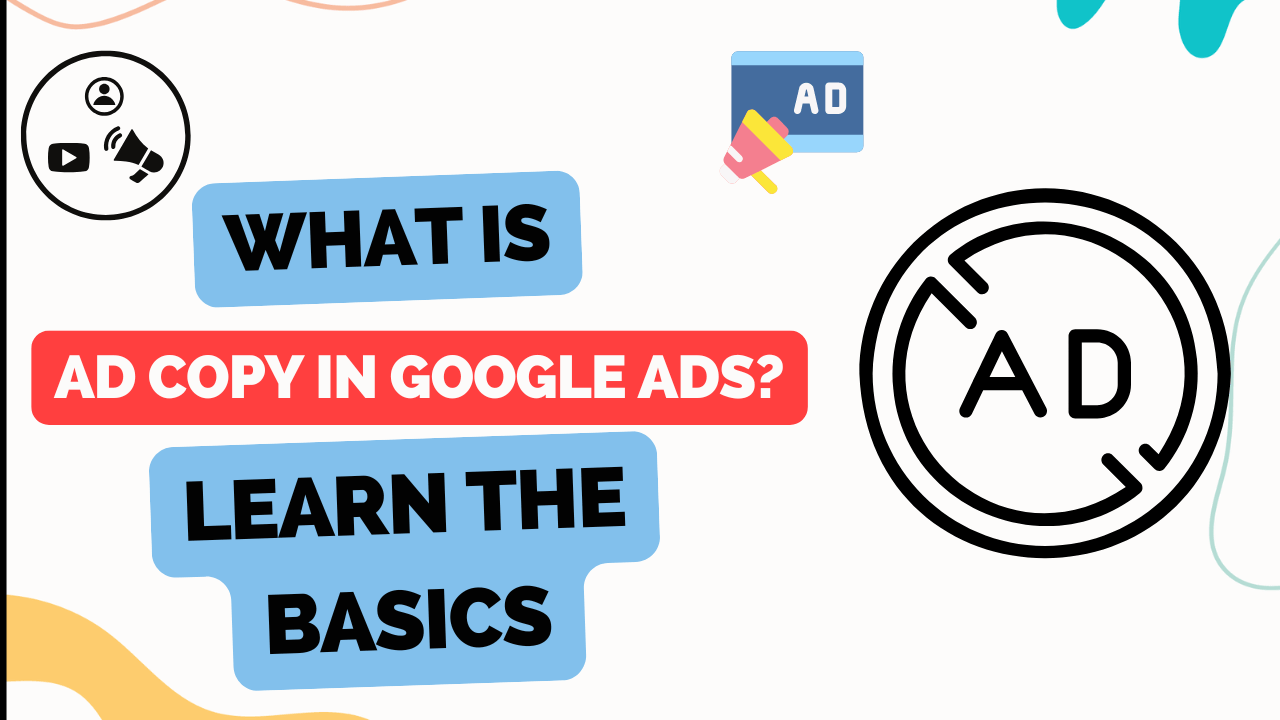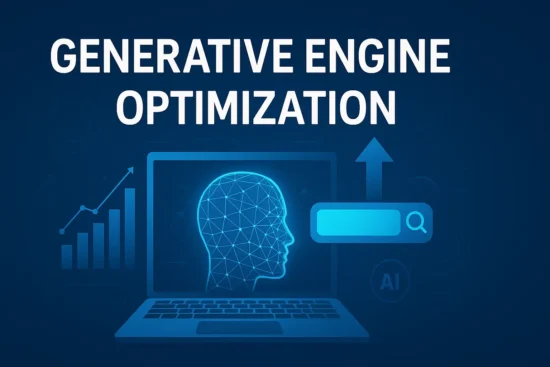
When it comes to Google Ads, one of the most essential elements of a successful campaign is the ad copy. But what exactly does that mean? In simple terms, ad copy refers to the text that appears in your Google Ads advertisements. It’s the message that you want to convey to your audience, guiding them to take action, whether it’s visiting your website, making a purchase, or calling your business.
In this blog, we’ll break down the basics of ad copy in Google Ads, including what it is, why it’s important, and how to write effective ad copy that helps you get the most out of your advertising efforts.
What is Ad Copy in Google Ads?
Ad copy in Google Ads refers to the text that appears in a search ad when someone types a query that matches the keywords you’re targeting. It is a critical component of a Google Ads campaign as it directly impacts the effectiveness of your ads.
Ad copy consists of several parts:
- Headline: This is the first thing people see in your ad, and it should be eye-catching and relevant to their search.
- Description: The description provides more details about your product or service, offering more reasons why the user should click on your ad.
- Display URL: This shows the website address where the user will land after clicking the ad.
- Final URL: This is the actual web page the user will visit after clicking the ad.
Good ad copy should be clear, concise, and persuasive, encouraging the user to take a specific action.
Why is Ad Copy Important in Google Ads?
Ad copy is incredibly important in Google Ads because it is the primary way you communicate with potential customers. When someone performs a search, they are looking for a solution to their problem, and your ad copy can be the deciding factor in whether they click on your ad or move on to a competitor’s.
Here are a few reasons why ad copy matters:
1. It Drives Click-Through Rates (CTR)
The more relevant and engaging your ad copy, the higher the likelihood that users will click on your ad. A higher click-through rate (CTR) indicates that your ad is meeting the needs of your audience, which can help your ad rank higher in Google’s auction and lower your cost per click (CPC).
2. It Helps Improve Quality Score
Google Ads uses a system called Quality Score to determine how relevant your ad and landing page are to a user’s search. High-quality ad copy is one of the key factors in improving your Quality Score. The better your Quality Score, the more likely you are to get better ad placements and lower costs.
3. It Encourages Conversions
Your ad copy is not only about getting clicks but also about getting the right kind of clicks. Great ad copy helps users understand exactly what they’ll get when they click, which can encourage them to take the next step — whether that’s making a purchase, filling out a form, or contacting you.
Key Elements of Effective Ad Copy
Now that we know what ad copy is and why it’s important, let’s take a closer look at the key elements that make ad copy effective.
1. Strong Headlines
The headline is the most crucial part of your ad copy because it’s the first thing users see. If your headline doesn’t grab attention or match what they’re looking for, they’re likely to skip your ad.
To write strong headlines:
- Use Relevant Keywords: Your headline should include keywords that align with the user’s search query. This helps your ad appear relevant to their needs and increases the chances of a click.
- Focus on Benefits: Instead of just stating what you sell, highlight how your product or service can benefit the user. For example, instead of just saying “Buy Shoes Online,” you might say, “Shop Trendy Shoes for Less.”
- Use Numbers or Offers: Adding numbers or special offers can catch attention, like “Save 50%” or “Free Shipping.”
2. Compelling Description
Your description provides more information about your product or service. It should complement your headline by giving users a reason to click on your ad. Think of it as an extension of your message — you’ve already grabbed their attention with your headline, now it’s time to convince them to take action.
Tips for writing a compelling description:
- Be Clear and Concise: While you want to be persuasive, you also need to be clear. Users should understand exactly what your ad is about within a few seconds of reading it.
- Highlight Unique Selling Points (USPs): What makes your product or service stand out? Whether it’s unbeatable prices, exceptional customer service, or a unique feature, make sure your description highlights what sets you apart.
- Use a Call to Action (CTA): Always include a CTA in your description. This could be something like “Shop Now,” “Learn More,” or “Get Started Today.” A strong CTA tells users exactly what to do next.
3. Relevant Landing Page
The landing page that users are directed to after clicking your ad plays a critical role in conversions. If your ad promises one thing and the landing page offers something else, users may quickly leave.
Make sure your landing page matches your ad copy by:
- Aligning Messaging: Ensure the messaging in your ad is consistent with what’s on your landing page. If your ad promises a discount, make sure the landing page highlights that offer.
- Simplifying the User Experience: Make it easy for users to take action, whether that’s making a purchase, signing up, or contacting you. Ensure the landing page is easy to navigate and has a clear CTA.
4. Display URL
Your display URL shows the web address where users will land after clicking your ad. While this URL doesn’t necessarily have to be the same as your final URL, it should still give users a clear idea of what to expect.
Make sure your display URL:
- Represents Your Brand: Ensure your display URL matches your brand or product.
- Is Simple and Clear: Avoid long, complicated URLs. The cleaner and more straightforward your display URL, the more trustworthy it will appear.
“At DigRab, we provide expert insights, tips, and strategies to help you succeed online. Explore our latest blogs and start improving your digital marketing today!
Visit DigRab now and stay ahead of the competition!“

How to Write Google Ads Copy That Converts
Writing ad copy that converts requires a combination of creativity and strategy. Here are some tips to help you write ad copy that drives results:
1. Know Your Audience
Before you even start writing, you need to understand who your audience is and what they’re looking for. Use data from your Google Ads account, customer feedback, and competitor research to understand the pain points, desires, and needs of your target audience.
2. Use Emotional Triggers
People make decisions based on both logic and emotion. By tapping into emotional triggers, you can make your ad copy more persuasive. For example, if you’re selling fitness products, you could focus on the desire for a healthier lifestyle or the pride of achieving fitness goals.
3. Be Specific
Vague or generic ad copy doesn’t inspire action. Be specific about what you offer, including details like prices, features, or benefits. Specificity makes your ad more credible and helps users feel confident about clicking.
4. Test Different Variations
One of the best ways to improve your ad copy is through A/B testing. Test different variations of your ad copy, such as different headlines or descriptions, to see what works best with your audience. Google Ads allows you to run multiple versions of your ads, so you can continuously refine your approach.
5. Match Search Intent
The key to writing effective ad copy is understanding the search intent behind a user’s query. Are they looking for information? Are they ready to make a purchase? Tailor your ad copy to match that intent. For example, if someone searches for “best restaurants in Dubai,” your ad should focus on offering a great dining experience.
Common Mistakes to Avoid in Google Ads Copy
While writing great ad copy is crucial, it’s equally important to avoid common mistakes that can hurt your ad’s performance. Here are some mistakes to avoid:
1. Using Generic Phrases
Avoid using generic phrases like “Best Prices” or “Top Quality.” Instead, be specific about your offer, and show users exactly why they should choose you.
2. Neglecting the Call to Action
Never forget to include a CTA. Without a CTA, users won’t know what action you want them to take. A strong CTA gives users a clear direction on what to do next.
3. Overloading Your Ad with Keywords
While it’s important to use keywords, don’t overdo it. Keyword stuffing can make your ad sound unnatural and reduce its effectiveness. Use keywords in a way that reads naturally and still makes sense to the reader.
4. Ignoring Mobile Users
Most Google Ads are viewed on mobile devices, so ensure your ad copy is mobile-friendly. Keep your headlines and descriptions short and to the point, as space on mobile devices is limited.
5. Not Testing Your Ads
If you’re not testing your ad copy, you’re missing out on opportunities to improve. Regularly review your ad performance and make adjustments to improve CTR and conversion rates.
Conclusion
Ad copy is a vital part of your Google Ads campaign. It’s the first thing users see, and it directly influences their decision to click on your ad. By writing clear, engaging, and relevant ad copy that matches the search intent of your audience, you can significantly improve your ad’s performance, increase your CTR, and ultimately achieve higher conversions.
When writing ad copy, remember to focus on strong headlines, compelling descriptions, and a clear call to action. Test different variations, know your audience, and keep refining your approach to get the best results. With well-crafted ad copy, your Google Ads campaigns can drive more traffic, boost sales, and grow your business.
If you want to read more blogs like this, visit our website for expert strategies and tips!




Leave a Reply